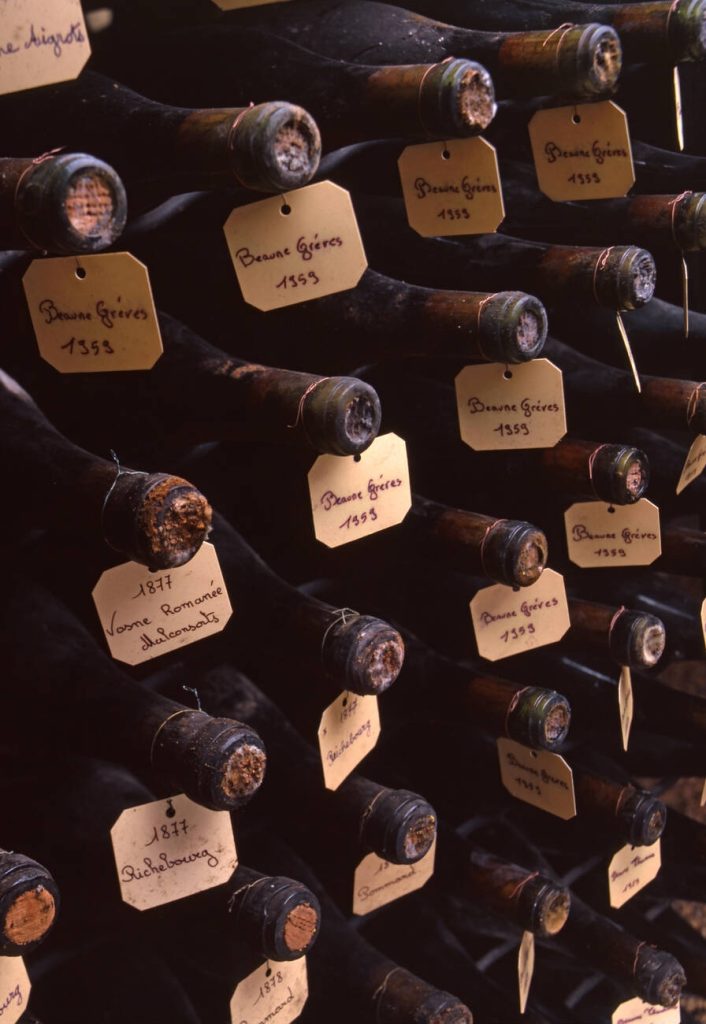Imagine yourself surrounded by rolling hills covered in lush vineyards, the air filled with the sweet aroma of grapes ripening under the warm Burgundy sun. You’re about to embark on a journey through the world of French Burgundy wines, where centuries of tradition and passion for winemaking have created some of the most sought-after bottles in the world. In this comprehensive guide, we’ll explore the history, terroirs, classifications, and unique characteristics that make Burgundy wines so captivating. Get ready to uncork a bottle and savor the rich flavors that only Burgundy can offer.
Contents
- History of Burgundy Wines
- Burgundy Terroirs and Climats
- Beaujolais: A Unique Region in Burgundy
- Sub-Regions of Burgundy: Chablis, Côte De Nuits, Côte De Beaune, Côtes Chalonnaise, Mâconnais
- Burgundy Classifications: Grand Cru, Premier Cru, Vins De Villages, Regional Wines
- Best Vintages in Burgundy
- Understanding the Characteristics of Burgundy Wine
- Influence of Growers in Burgundy
- Comparison With Bordeaux Wines
- Classification and Naming in Burgundy
- Tasting and Examining Burgundy Wines
- The Role of Terroir in Burgundy Wine Production
History of Burgundy Wines
The history of Burgundy wines dates back to the Romans who planted the first vineyards in the region. French Burgundy, also known as red Burgundy wine, has a rich and fascinating history. The Burgundy region wine production started during the Middle Ages, with monks playing a significant role in producing wine for the Dukes of Burgundy. This tradition has continued for over two thousand years, making Burgundy one of the oldest and most prestigious wine-producing regions in France. Today, Burgundy is renowned for its high-quality wines, especially its reds made from Pinot Noir grapes. The history of burgundy wines is intertwined with the culture and heritage of this beautiful region, making it a must-visit destination for wine enthusiasts around the world.
Burgundy Terroirs and Climats
Explore the distinct terroirs and climats of Burgundy, where you can discover unique plots of land that contribute to the characteristics of the wines. Burgundy, known for its exquisite French burgundy wine, is divided into five regions: Chablis, Côte de Nuits, Côte de Beaune, Côtes Chalonnaise, and Mâconnais. Each region has its own specific terroir and climatic conditions that shape the flavor profile of the wines produced there. Chablis produces crisp and zesty white wines, while Côte de Nuits is renowned for its burgundy reds with earthy flavors. Côte de Beaune offers buttery chardonnays, and Côtes Chalonnaise provides similar quality at a slightly lower price point. Mâconnais produces fruity white wines like Pouilly-Fuissé. Understanding what is burgundy wine means appreciating the influence of these regions on the final product. So explore Burgundy’s diverse terroirs and climats to truly savor the essence of this exceptional French wine.
Beaujolais: A Unique Region in Burgundy
Beaujolais, located south of Burgundy, is known for its light red wines made primarily from the Gamay Noir grape. When you visit Beaujolais, you will be captivated by its picturesque vineyards and charming villages. Here’s a glimpse of what you can expect:
- Vineyard Views:
- Rolling hills covered in lush green vineyards.
- Quaint villages nestled among the vines.
- Wine Tasting Experience:
- Sipping on vibrant and fruity Beaujolais Nouveau.
- Exploring the nine prestigious Cru Beaujolais villages with their unique expressions of Gamay Noir.
In Beaujolais, wine is not just a drink but a way of life. So, immerse yourself in this enchanting region and discover the beauty and flavors that make it truly special.
Sub-Regions of Burgundy: Chablis, Côte De Nuits, Côte De Beaune, Côtes Chalonnaise, Mâconnais
Chablis, Côte De Nuits, Côte De Beaune, Côtes Chalonnaise, and Mâconnais are all sub-regions that contribute to the diverse and exceptional wines of Burgundy. In Chablis, you’ll find white wines known for their crisp and zesty taste. Moving on to Côte De Nuits, this region mainly produces red wines with 24 Grand Crus and earthy flavors. If you’re a fan of buttery chardonnays, then Côte De Beaune is the place to be. Côtes Chalonnaise offers wines similar in quality to its neighbors but at a slightly lower price point. And lastly, Mâconnais is influenced by the Mediterranean and produces fruity white wines like Pouilly-Fuissé. Each sub-region has its own unique characteristics and contributes to the overall excellence of Burgundy’s wine offerings.
Burgundy Classifications: Grand Cru, Premier Cru, Vins De Villages, Regional Wines
To fully appreciate the classifications of Burgundy wines, you should familiarize yourself with the terms Grand Cru, Premier Cru, Vins De Villages, and Regional Wines.
- Grand Cru represents the pinnacle of Burgundy wine production, with vineyards that are renowned for producing exceptional wines.
- These vineyards have strict regulations and produce only a small percentage of the total wine production in Burgundy.
- The wines from Grand Cru vineyards are highly sought after and can be quite expensive.
- Premier Cru wines come next in the hierarchy and offer excellent quality at a slightly more accessible price point.
- These vineyards are also regulated but may have a wider range of styles and characteristics compared to Grand Cru.
- Vins De Villages make up a significant portion of Burgundy’s wine production and offer good quality at a lower price.
- These wines come from specific villages within the region and reflect their unique terroir.
- Regional Wines, known as Bourgogne Rouge or Bourgogne Blanc, represent entry-level options that are best enjoyed young.
- These wines showcase the overall style and characteristics of the broader Burgundy region.
Understanding these classifications will help you navigate through the diverse offerings in Burgundy and find the perfect wine for your taste preferences.
Best Vintages in Burgundy
When exploring the best vintages in Burgundy, you’ll discover exceptional years that have produced highly ranked wines. These vintages are a testament to the skill and dedication of the winemakers in this region. The quality of a vintage can greatly impact the taste and value of the wine, making it crucial for wine enthusiasts to consider when selecting Burgundy wines. Over the past few years, Burgundy has seen some excellent vintages with the highest rankings. These exceptional years have resulted in wines that are highly sought after and cherished by collectors and connoisseurs alike. So, whether you’re looking for a special bottle to enjoy or adding to your wine collection, be sure to explore these outstanding vintages from Burgundy.
Understanding the Characteristics of Burgundy Wine
If you’re new to Burgundy wine, understanding its characteristics can help you appreciate its delicate aromas and gentle palate. Here are some key points to keep in mind:
- Aromas: Burgundy wines have a lovely perfume that is important to appreciate. The exquisite aromas of cherries and other fruits are characteristic of red Burgundy.
- Palate: Red Burgundy is delicate and gentle on the palate. It has high acidity, refreshing characteristics, and light tannins. Its medium-bodied nature allows for a smooth and elegant drinking experience.
- Terroir Influence: Terroir plays a significant role in shaping the characteristics of Burgundy wines. Each grower’s interpretation of terroir can lead to diverse styles within the same appellation.
- Vineyard Management: Good producers intervene frequently in the vineyard but little in the winery. Vigilant vineyard management and low yields are necessary for quality wines.
Understanding these characteristics will enhance your appreciation of Burgundy wine’s unique qualities.
Influence of Growers in Burgundy
Understanding the influence of Burgundy growers allows you to appreciate the characterful wines they produce. In Burgundy, domaines are often small family firms that have been passed down through generations. These growers are fully involved in every step of the winemaking process, from managing the vineyards to bottling and selling the wines. Their philosophy and fingerprint can be seen in the style and quality of the wines they produce. With a typical size of 10 hectares, these growers have the freedom to make wines according to their desired style. They are hands-on, performing tasks like pruning and ploughing vineyards themselves. It’s fascinating how different producers within the same commune can create wines with varying styles, showcasing their individual approach and expertise in crafting unique Burgundy wines.
Comparison With Bordeaux Wines
Bordeaux wines, on the other hand, have a higher average quality and more homogeneity of style compared to Burgundy. Here’s what sets Bordeaux apart:
- Larger Chteaux: Bordeaux chteaux can be massive, some reaching up to 70 hectares and owned by corporations. This scale allows for more consistency in winemaking practices.
- Involvement of Multiple Individuals: In Bordeaux, there are multiple individuals involved in the winemaking process, resulting in less variation and more orthodox practices.
- Consultants: Experts like Jacques Boissenot and Michel Rolland oversee key moments like blending, ensuring a standardized approach.
While Burgundy is known for its individualistic growers and diverse styles within the same appellation, Bordeaux offers a more consistent experience. The larger scale and involvement of multiple people contribute to Bordeaux’s higher average quality and homogeneity of style.
Classification and Naming in Burgundy
The vineyards in Burgundy are classified into four ascending grades, with each grade representing a different level of quality and prestige. At the bottom of the classification is the bourgogne level, which includes wines made from grapes grown throughout the region. These wines are typically entry-level and offer a good introduction to Burgundy’s style and flavors. The next grade up is village, which designates wines made from grapes grown within specific villages in Burgundy. Village wines showcase more distinct characteristics and reflect the terroir of their respective locations. Premier cru comes next, indicating wines made from grapes grown in premier cru vineyards, which are considered to have superior quality and produce more complex and age-worthy wines. Finally, at the top of the classification are grand cru vineyards, producing wines that represent the pinnacle of excellence in Burgundy. These prestigious vineyards yield exceptional wines with unparalleled depth, complexity, and aging potential.
Tasting and Examining Burgundy Wines
Now that you understand the classification and naming system in Burgundy, it’s time to dive into the exciting part – tasting and examining Burgundy wines. As you explore the world of Burgundy, here are some key points to keep in mind:
Tasting and Characteristics:
- Red Burgundy is known for its lovely perfume, so take the time to appreciate and examine its aromas.
- Delicate and gentle on the palate, red Burgundy has high acidity and refreshing characteristics.
- Serving it at the right temperature and in the proper glass enhances its attributes.
- Pinot Noir’s thin skin gives it a relatively light color, but don’t let that fool you – its exquisite aromas should be savored.
Terroir Influence:
- Terroir plays a significant role in shaping the characteristics and nuances of Burgundy wines.
- Each grower’s interpretation of terroir can lead to diverse and varied wine styles within the same appellation.
The Role of Terroir in Burgundy Wine Production
Terroir in Burgundy wines is a crucial factor that shapes their distinct characteristics and flavors. The unique combination of soil, climate, and geography contributes to the individuality of each wine. The limestone-rich land provides a strong mineral component to the wines, while the specific plots of land known as climats have their own geographical and climatic conditions that further influence the wine’s character. Descriptions of each climat include details about its incline, aspect, elevation, and soil type. This attention to detail allows for precise winemaking decisions that highlight the terroir’s impact on the final product. It is through this careful cultivation and understanding of terroir that Burgundy wines are able to exhibit their exceptional quality and taste.



